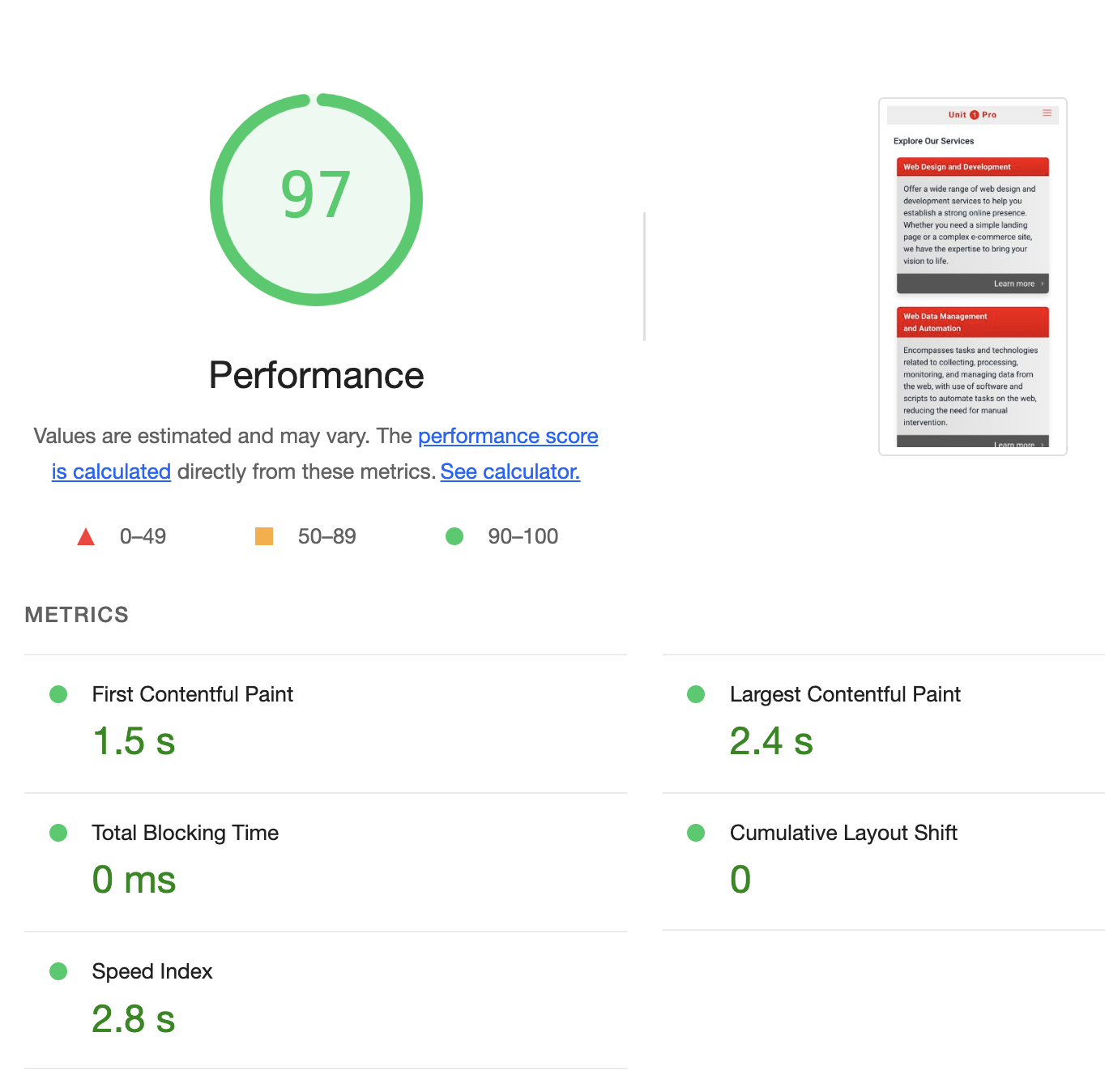Web Health Check
Web and Mail Health Check services are designed to assess and monitor the health, performance, and security of your web and email systems. Here`s an overview of each:
Performance:
It`s important to constantly measure and analyze key performance indicators like page load speed, interactivity, and visual stability. Lighthouse as performance measurement tool offers actionable suggestions to improve loading times, minimize render-blocking resources, and optimize assets for a smoother user experience.

- Load times: Checking how quickly your web pages load.
- Server response times: Evaluating how quickly your server responds to requests.
Security:
- Vulnerability assessment: Scanning for common vulnerabilities such as SQL injection, cross-site scripting (XSS), and others.
- SSL/TLS: Ensuring secure communication between the server and users with up-to-date SSL/TLS certificates.
SEO:
- On-page SEO: Evaluating meta tags, keywords, and other on-page SEO factors.
- Backlink analysis: Reviewing the quality and health of backlinks to your site.
Usability:
- User experience: Ensuring the site is user-friendly and accessible.
- Mobile-friendliness: Checking how well the site performs on mobile devices.
Content:
- Broken links: Identifying and fixing any broken links.
- Content quality: Ensuring that content is relevant, high-quality, and up-to-date.
Mail Health Check
A Mail Health Check focuses on your email systems, ensuring they are secure, reliable, and functioning properly. Key areas typically assessed include:
Performance:
- Email delivery: Checking that emails are delivered in a timely manner.
- Queue management: Ensuring email queues are properly managed and emails are not getting stuck.
Security:
- Spam and phishing: Assessing your defenses against spam and phishing attacks.
- Authentication: Ensuring email authentication protocols such as SPF, DKIM, and DMARC are properly configured.
Compliance:
- Data protection: Ensuring that email systems comply with relevant data protection regulations (e.g., GDPR).
- Retention policies: Reviewing email retention policies to ensure compliance with organizational and legal requirements.
Infrastructure:
- Server health: Evaluating the health and performance of email servers.
- Configuration: Checking the configuration of email servers and clients to ensure optimal performance and security.
User Experience:
- Access: Ensuring users can reliably access their email via various devices and clients.
- Spam filtering: Reviewing the effectiveness of spam filters and making adjustments if necessary.
